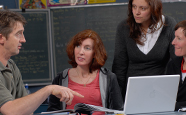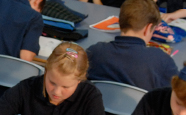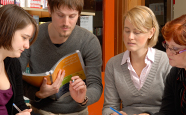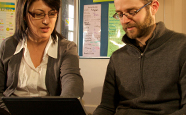Safe Schools Hub for Parents
Safe Schools KitWhere do I start?
You might want to browse the nine elements of the National Safe Schools Framework and delve further into those that interest you, or just work your way through Elements 1 to 9. This is a toolkit, so each element has a range of practical tools for you to investigate and use with your colleagues to respond to the needs of your school.
An introduction to the National Safe Schools Framework
Schools are among the safest places in the community for children and young people. The National Safe Schools Framework, originally developed in 2003, provides a vision and a set of guiding principles for safe and supportive school communities that promote student wellbeing and develop respectful relationships. It identifies nine elements that help create teaching and learning communities where all members of the school community feel secure from harassment, aggression, violence and bullying. This is not just a new ‘programme’, it is a culture and a philosophy underpinning all that happens in the school.
Guiding principles
The vision is underpinned by the following guiding principles that represent fundamental beliefs about safe, supportive and respectful school communities, a prerequisite for effective learning in all school settings.
Australian schools:
- affirm the rights of all members of the school community to feel safe and be safe at school
- acknowledge that being safe and supported at school is essential for student wellbeing and effective learning
- accept responsibility for developing and sustaining safe and supportive learning and teaching communities that also fulfil the school’s child protection responsibilities
- encourage the active participation of all school community members in developing and maintaining a safe school community where diversity is valued
- actively support young people to develop understanding and skills to keep themselves and others safe
- commit to developing a safe school community through a whole-school and evidence-based approach.
Context
It is essential that all schools provide a supportive learning community where all students feel and are safe. Students have a fundamental right to learn in a safe, supportive environment and to be treated with respect. School staff, parents and the local community also have the right to teach, work and participate in an environment that is safe and supportive.
The Australian community rightly expects all education systems and leaders to take every available measure to ensure the safety of students and the broader school community, and to protect and support them. The Melbourne Declaration on Educational Goals for Young Australians (2008) affirms:
Schools play a vital role in promoting the intellectual, physical, social, emotional, moral, spiritual and aesthetic development and wellbeing of young Australians …
The National Safe Schools Framework outlines how this fundamental role of schools can be achieved. The Framework aligns with the following:
- the National Smarter Schools Partnerships under the National Education Agreement
- the National Strategy for Young Australians
- diverse national, state and territory initiatives, policies and legislative frameworks currently in place that support students’ safety and wellbeing.
Australian Curriculum
The Safe Schools Hub is aligned with the Australian Curriculum, and it provides a whole-school approach to addressing key elements of the Australian Curriculum general capabilities:
- Personal and social capability: the National Safe Schools Framework provides a multi-level approach to building students’ abilities to understand themselves and others, and to manage their relationships, lives, work and learning more effectively.
- Ethical understanding: the Safe Schools Hub activities develop an understanding of values such as honesty, justice and fair play.
- Intercultural understanding: empathy for others and the acceptance of diversity are central to a safe and supportive learning environment for all students.
- Information and communication technology capability: the site is rich in resources that teach responsible use of ICTs and assist students to understand the social impacts of technology.
Personal and social capability involves students in a range of practices including recognising and regulating emotions, developing empathy for others and understanding relationships, establishing and building positive relationships, making responsible decisions, working effectively in teams, handling challenging situations constructively and developing leadership skills.
‘General capabilities in the Australian Curriculum’, Australian Curriculum Assessment and Reporting Authority
The Safe Schools Hub helps schools establish a sound foundation for students to develop and flourish in their personal and social capabilities, to explore their ethical and intercultural understandings and to use ICTs responsibly. The approach of the Safe Schools Hub is based on an understanding that individual student growth in these general capabilities occurs best in a school climate that enacts and models these capabilities across the whole school community and that deliberately fosters and enhances these in the broadest sense. A safe and supportive school builds social capability for a lifetime.

Explore the nine elements
The foundations of a safe school can be found in the nine elements of the framework. They assist schools in planning, implementing and maintaining a safe and supportive learning community. Discover more about the nine elements.

Assess your school
How does your school measure up? The School Audit Tool will help you pinpoint where you are doing well and where action is recommended, and highlight key priority areas. Use the tool individually or as a group with colleagues. Discover more about the School Audit Tool.

Professional learning
Professional learning modules (PLMs) provide self-paced learning covering the whole of the framework, encouraging you to investigate, reflect and respond. Tailored to a specific audience, they draw on material within and beyond the Safe Schools Hub. Discover more about PLMs.

Find supporting resources
We have selected the best online resources and linked them to the elements of the Framework. Use our resources gallery to search for specific resources to meet a wide range of needs. Discover more about supporting resources.
